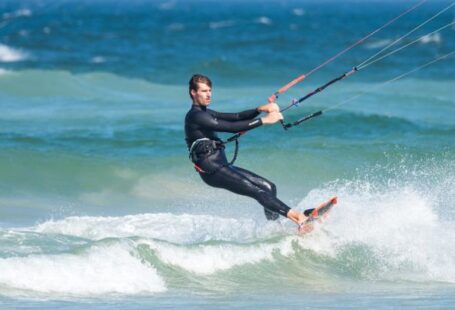Ear barotrauma, a condition caused by changes in air pressure, can be a painful and potentially serious issue for individuals who experience it. Whether during scuba diving, flying, or even driving up a mountain, the sudden pressure changes can lead to discomfort, pain, and in severe cases, damage to the ear. However, there are techniques that can help prevent ear barotrauma from occurring, one of which is equalizing techniques. By understanding how these techniques work and incorporating them into activities where pressure changes are common, individuals can protect their ears and enjoy their experiences without the fear of ear barotrauma.
### Understanding Ear Barotrauma
Before delving into how equalizing techniques can prevent ear barotrauma, it’s essential to understand what this condition entails. Ear barotrauma occurs when there is an imbalance in pressure between the middle ear and the environment, leading to discomfort or pain. This pressure difference can cause the eardrum to stretch or even rupture in severe cases, resulting in hearing loss, dizziness, or other complications. Common activities that can trigger ear barotrauma include scuba diving, flying in an airplane, or driving to high altitudes.
### The Role of Equalizing Techniques
Equalizing techniques are a set of methods used to balance the pressure inside the ear with the external environment, preventing the onset of ear barotrauma. By equalizing the pressure, individuals can alleviate discomfort and protect their ears from potential damage. These techniques are particularly crucial for activities that involve rapid changes in pressure, such as diving or flying, where the risk of ear barotrauma is higher.
### Valsalva Maneuver
One of the most well-known equalizing techniques is the Valsalva maneuver. This technique involves closing the mouth and pinching the nose while gently blowing air out through the nose, which helps equalize the pressure in the middle ear with the outside environment. By performing the Valsalva maneuver regularly during pressure changes, individuals can prevent the build-up of pressure in the ear and reduce the risk of ear barotrauma.
### Toynbee Maneuver
Another effective equalizing technique is the Toynbee maneuver. In this method, individuals close their mouth, pinch their nose, and swallow while keeping the mouth closed. By swallowing, the Eustachian tube opens, allowing air to flow into the middle ear and equalize the pressure. The Toynbee maneuver is particularly useful for individuals who find the Valsalva maneuver uncomfortable or challenging to perform.
### Frenzel Maneuver
For individuals who struggle with equalizing due to issues such as congestion or sinus problems, the Frenzel maneuver can be a helpful alternative. This technique involves closing the mouth, pinching the nose, and making a “k” sound, which helps move the back of the tongue upward and open the Eustachian tube. By utilizing the Frenzel maneuver, individuals can equalize the pressure in their ears effectively, even in challenging conditions.
### Conclusion: Safeguarding Your Ears
In conclusion, ear barotrauma is a common yet preventable condition that can cause discomfort and potential harm to individuals. By incorporating equalizing techniques such as the Valsalva, Toynbee, and Frenzel maneuvers into activities that involve pressure changes, individuals can safeguard their ears and enjoy their experiences without the worry of ear barotrauma. Understanding how these techniques work and practicing them regularly can make a significant difference in maintaining ear health and preventing unnecessary pain and complications. So, next time you find yourself in a situation with rapid pressure changes, remember to equalize and protect your ears from barotrauma.





